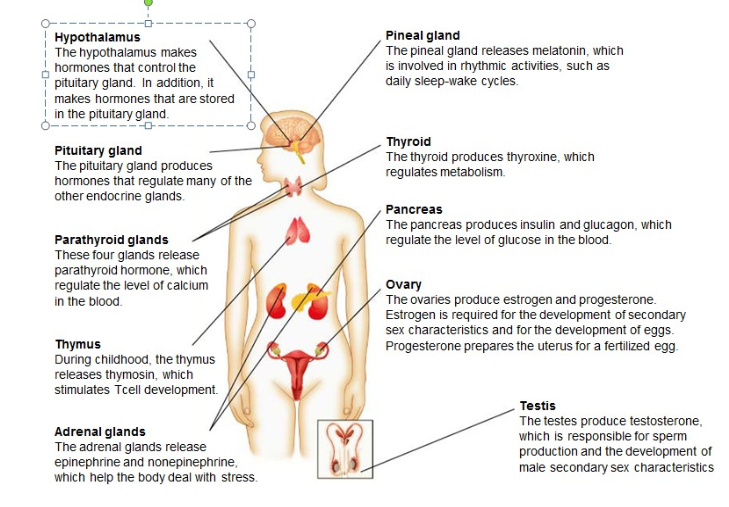Endocrine system organs list. Endocrine System Organs: A Comprehensive Guide
What are the endocrine system organs. Learn about the functions and locations of the major endocrine glands, including the adrenal, thyroid, parathyroid, pancreas, and pituitary glands.
The Endocrine System: An Overview
The endocrine system is a complex network of glands and organs that play a crucial role in regulating many of the body’s functions. This system is responsible for producing and releasing hormones, which act as chemical messengers, traveling through the bloodstream to target cells and tissues throughout the body. Hormones coordinate and control a wide range of physiological processes, including growth, metabolism, temperature regulation, stress response, and reproduction.
Endocrine Glands and Their Functions
The endocrine system is composed of several “classical” endocrine glands, each with its own unique structure and function. Let’s explore the major endocrine glands and the hormones they produce:
Adrenal Glands
The adrenal glands are a pair of pyramid-shaped glands located on top of the kidneys. They are composed of two distinct regions: the outer adrenal cortex and the inner adrenal medulla. The adrenal cortex is further divided into three layers – the zona glomerulosa, zona fasciculata, and zona reticularis – each responsible for producing different hormones. The adrenal cortex secretes hormones like aldosterone, cortisol, and androgens, which are involved in regulating fluid balance, metabolism, and stress response. The adrenal medulla, on the other hand, produces the catecholamines epinephrine and norepinephrine, which play a crucial role in the body’s fight-or-flight response.
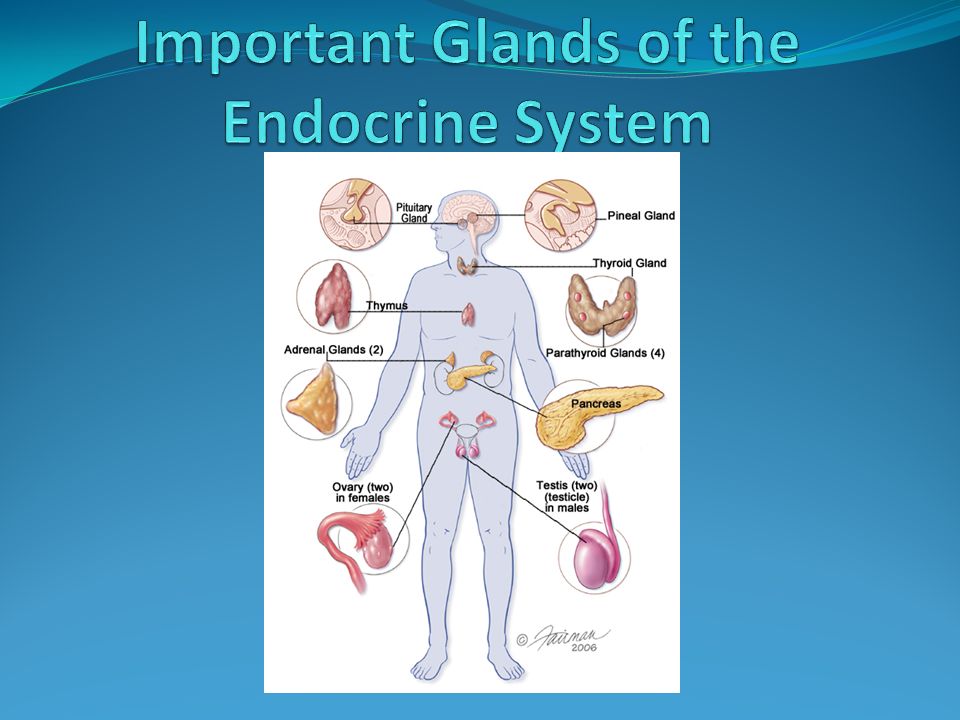
Thyroid Gland
The thyroid gland is a butterfly-shaped gland located on the front of the neck, just below the larynx (voice box). This gland produces hormones like thyroxine (T4) and triiodothyronine (T3), which regulate metabolism, body temperature, and heart rate. The thyroid gland also secretes the hormone calcitonin, which helps to regulate calcium and phosphate levels in the blood.
Parathyroid Glands
The parathyroid glands are four small glands located on the posterior surface of the thyroid gland. These glands produce parathyroid hormone (PTH), which is responsible for maintaining calcium and phosphate balance in the body. PTH increases blood calcium levels by stimulating the release of calcium from bones and increasing calcium absorption in the kidneys and intestines.
Pancreas
The pancreas is an organ located behind the stomach that has both exocrine and endocrine functions. The endocrine portion of the pancreas consists of clusters of cells called islets of Langerhans, which produce hormones like insulin and glucagon. Insulin lowers blood glucose levels, while glucagon increases blood glucose levels, helping to maintain homeostasis.

Pituitary Gland
The pituitary gland, often referred to as the “master gland,” is a small, pea-sized gland located at the base of the brain. It is divided into two lobes – the anterior pituitary and the posterior pituitary – each of which produces different hormones. The anterior pituitary secretes hormones like growth hormone, thyroid-stimulating hormone, adrenocorticotropic hormone, and follicle-stimulating hormone, which regulate various physiological processes. The posterior pituitary stores and releases hormones produced by the hypothalamus, such as antidiuretic hormone and oxytocin.
Regulation of Endocrine Glands
The endocrine system is regulated by complex feedback loops that involve the hypothalamus, pituitary gland, target glands, and target tissues. The hypothalamus, located at the base of the brain, monitors the body’s internal environment and secretes releasing hormones that stimulate the pituitary gland to produce its own hormones. These pituitary hormones then target the other endocrine glands, causing them to secrete their specific hormones. The target tissues then respond to the hormones, and this response is detected by the hypothalamus, which adjusts the release of its hormones accordingly, completing the feedback loop.
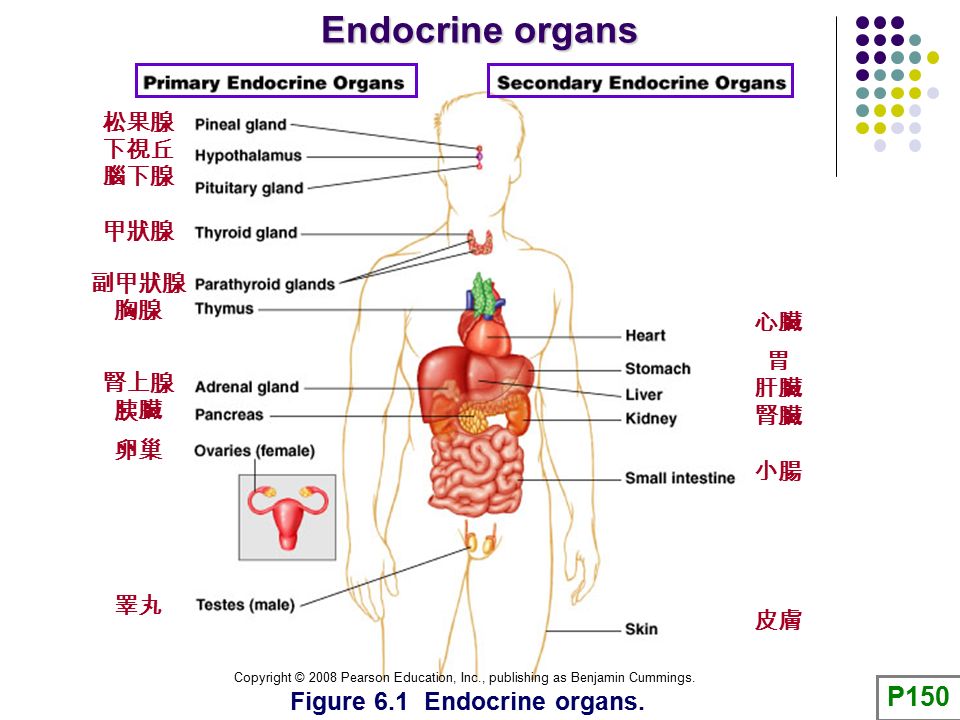
Endocrine System Disorders
Imbalances or dysfunctions in the endocrine system can lead to a variety of disorders, including thyroid disorders (such as hypothyroidism and hyperthyroidism), diabetes, Cushing’s syndrome, Addison’s disease, and growth disorders. These conditions can have significant impacts on an individual’s health and wellbeing, and may require medical intervention and treatment.
The Importance of the Endocrine System
The endocrine system plays a crucial role in maintaining the body’s homeostasis and ensuring the proper functioning of various physiological processes. By understanding the structure and function of the endocrine glands, as well as the regulation of the endocrine system, we can better appreciate the complex and vital role it plays in our overall health and well-being.
Chapter 17 The Endocrine System – Anatomy and Physiology Laboratory Manual for Nursing and Allied Health
By Rajeev Chandra
Motivation.
Figure 17.1 Endocrine System and Balance. The endocrine system is responsible for regulating many of the variables controlling the body’s internal environment. Hormones of the endocrine system coordinate and control growth, metabolism, temperature regulation, the stress response, reproduction, and many other functions. Image Credit: photographer Sumit Bose, Wikimedia Commons, photo title Yoga, license CC-BY
You may never have thought of it this way, but when you send a text message to two friends to meet you at the dining hall at six, you’re sending digital signals that (you hope) will affect their behavior—even though they are some distance away. Similarly, certain cells send chemical signals to other cells in the body that influence their behavior. This long-distance intercellular communication, coordination, and control is critical for homeostasis, and it is the fundamental function of the endocrine system.
The laboratory exercises in this module will identify several of the “classical” endocrine glands, describe the location and structure of these glands (both gross and histological), and outline the functions of the hormones that are secreted from these glands. Regulation of the glands by factors in the internal environment will also be explored in a simulated experiment.
Upon completion of the work in this chapter students should be able to:
- Identify the classical endocrine glands on a model or diagram
- List the hormones produced by each endocrine gland identified, and discuss the actions of each hormone identified
- Differentiate among the histology of the endocrine glands when viewed on a microscope slide
- Identify the zona glomerulosa, zona fasciculata, zona reticularis, and adrenal medulla, and list the hormones that are released from each region
- Identify pancreatic islets
- Describe the nature of the feedback loops that regulate the activity of the hypothalamus, pituitary gland, the target glands, and target tissues
Background.
Figure 17.2 Major endocrine organs.
Overview
Hormones are chemical messengers produced by cells and released into the bloodstream, where they travel throughout the body. This allows these messengers to act on cells and organs that may be distant from the cells that synthesized them. Although many cells release chemicals that communicate with other cells, we typically describe some organs or glands as being part of the “endocrine system.” Glands that are typically included in discussions of the anatomy and physiology of the endocrine system are shown at right.
Each endocrine gland secretes particular hormones, which in turn has particular effects on the target cells and organs. We’ll be looking at these glands and hormones individually as part of this exercise.
SPECIFIC ENDOCRINE GLANDS
Adrenal glands
The adrenal glands (as their name implies) are located near the kidneys (ad-RENAL). They are paired, pyramidal glands that sit on the superior aspect of each kidney.
They are paired, pyramidal glands that sit on the superior aspect of each kidney.
The adrenal glands are composed of two distinct regions: the outer adrenal cortex, and the inner adrenal medulla. These regions can be seen when the glands are sectioned, but the real differences are clear when the tissue is viewed under a microscope.
Figure 17.3 Adrenal Glands. Credit: Wikipedia, license Public Doman.
Adrenal Cortex
The adrenal cortex can be further divided into 3 sub-regions or layers:
The zona glomerulosa, the outermost or most superficial layer, which synthesizes and secretes aldosterone in response to stimuli like decreased blood pressure. Aldosterone
(a steroid) regulates Na+ and K+ balance, and plays an important role in fluid homeostasis.
The zone fasciculata, the middle layer, synthesizes and secretes cortisol and other glucocorticoids in response to ACTH from the anterior pituitary.
The zona reticularis, the deepest layer of the cortex, secretes androgens, or sex hormones (that are also steroids). These hormones act throughout the body and have similar effects as sex steroids produced by the ovaries and testes.
Adrenal Medulla
The adrenal medulla is the innermost (deepest) region of the adrenal gland, and consists mostly of modified sympathetic nerves. As a result, the adrenal medulla synthesizes and secretes catecholamines epinephrine and norepinephrine into the bloodstream.
Figure 17.4 Adrenal gland histology. A histological image that clearly shows the cortex and medulla, and the layers of the cortex. Credit: photo by Jpogi, Wikimedia Commons, license CC0
Thyroid gland
The thyroid gland is a butterfly-shaped gland located on the anterior aspect of the larynx (voicebox). The right and left lobes on either side (analogous to the butterfly’s wings) are connected by a thin band of glandular tissue called the isthmus (Figure 17. 5).
5).
Figure 17.5 Thyroid gland anatomical location. Credit: Wikimedia Commons, license Public Domain.
Histologically, the thyroid gland is composed of follicles, round structures where thyroid hormones are synthesized and released. Several follicles can be seen in the photomicrograph below. The substance in the follicles is called colloid, which is an iodine-rich precursor to thyroid hormones. The follicular cells use these precursor molecules to synthesize and release the finished thyroid hormones (triiodothyronine, or T3, and thyroxine, or T4). Thyroid hormones act on many other cells in the body and have many effects, including increasing heart rate, increasing protein synthesis, and increasing overall metabolic rate. Parafollicular cells are found in-between the follicles. These cells synthesize another hormone called calcitonin, which plays a role in calcium balance in the body.
Figure 17.6 Thyroid gland histology.
Parathyroid glands
The parathyroid glands are 4 – 6 small, round glands found on the posterior aspect of the thyroid gland (Figure 17.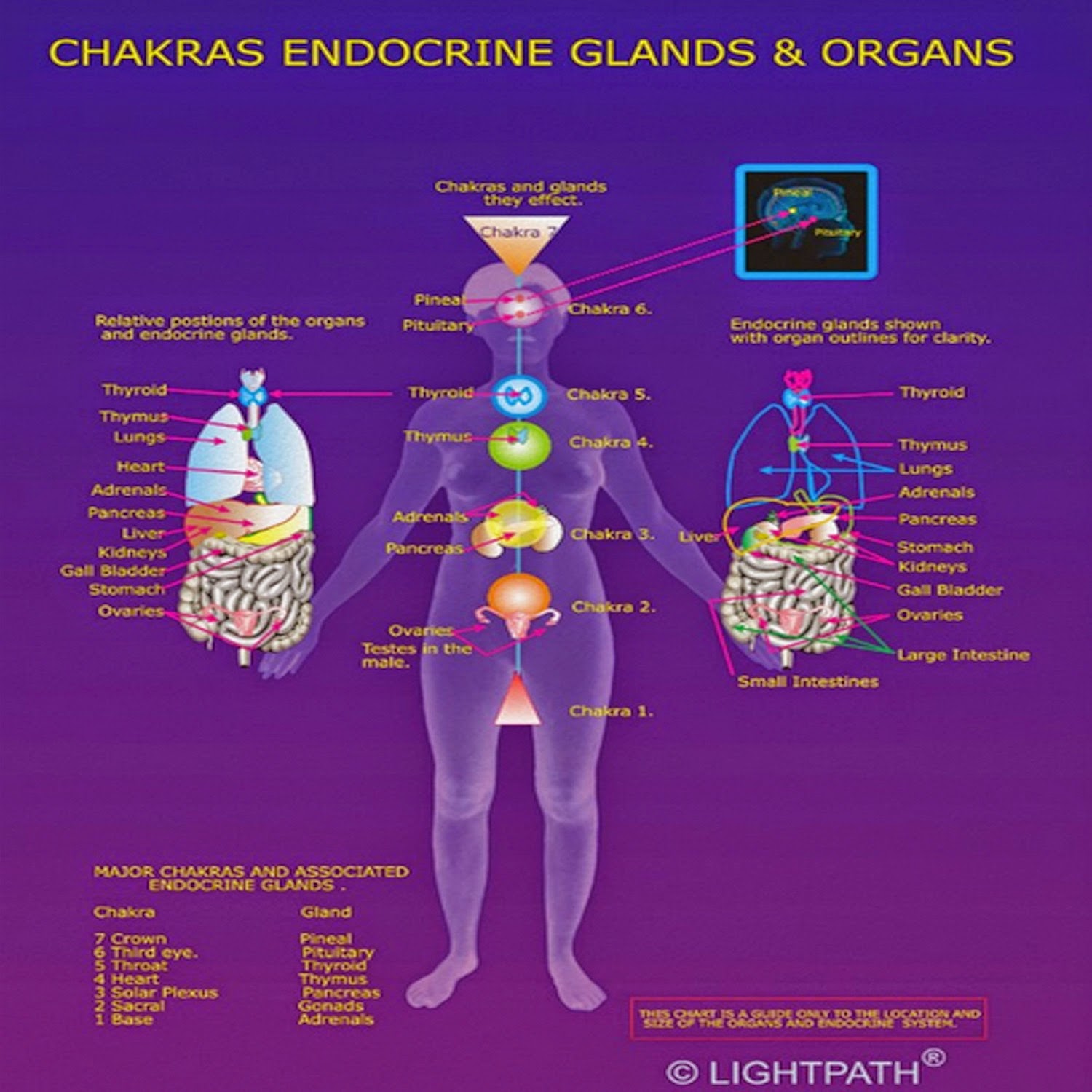 7). These glands secrete parathyroid hormone (PTH) in response to low levels of calcium in the plasma. PTH acts to activate osteoclasts to dissolve existing bone tissue, liberating the calcium that is stored there. PTH also acts to increase calcium absorption from the intestines and increases the reabsorption of calcium in the kidney tubules. The net result of PTH on the body is to increase calcium ion levels in the plasma.
7). These glands secrete parathyroid hormone (PTH) in response to low levels of calcium in the plasma. PTH acts to activate osteoclasts to dissolve existing bone tissue, liberating the calcium that is stored there. PTH also acts to increase calcium absorption from the intestines and increases the reabsorption of calcium in the kidney tubules. The net result of PTH on the body is to increase calcium ion levels in the plasma.
Figure 17.7 Parathyroid glands anatomical location. Purple spots indicate the glands. Image credit: By BodyParts3D, Wikimedia Commons, license CC-BY-SA
A photomicrograph of the parathyroid gland (Figure 17.8) shows the cells that are responsible for the synthesis and release of PTH called chief cells, or parathyroid cells. Other cells that are present in the parathyroid glands are called oxyphil cells, but their function is not clear.
Figure 17.8 Parathyroid gland histology. Credit: Image by Nephron, Wikimedia Commons, license CC-BY-SA
Pancreas
Figure 17. 9 Pancreas anatomic location. Credit: Gray’s Anatomy (1918) on Wikimedia Commons, Public Domain.
9 Pancreas anatomic location. Credit: Gray’s Anatomy (1918) on Wikimedia Commons, Public Domain.
The pancreas is a large, comma-shaped organ (Figure 17.9) that has both exocrine functions (synthesizing digestive juices that are secreted into the small intestine) and endocrine functions. It is located in the abdominal cavity, posterior to the stomach and tucked into the curve of the duodenum.
Several hormones are synthesized and secreted from the pancreas, including insulin, glucagon, and somatostatin. (Somatostatin is known by another name – growth hormone inhibiting hormone, the same hormone that is released from the hypothalamus to regulate the activity of the pituitary gland.)
Figure 17.10 Pancreas. The diagram shows the location of the pancreas relative to the duodenum. This diagram also shows the relationship between the exocrine cells (those that produce the digestive juices) and the clusters of endocrine cells – the pancreatic islets or Islets of Langerhans- that are scattered throughout the tissue.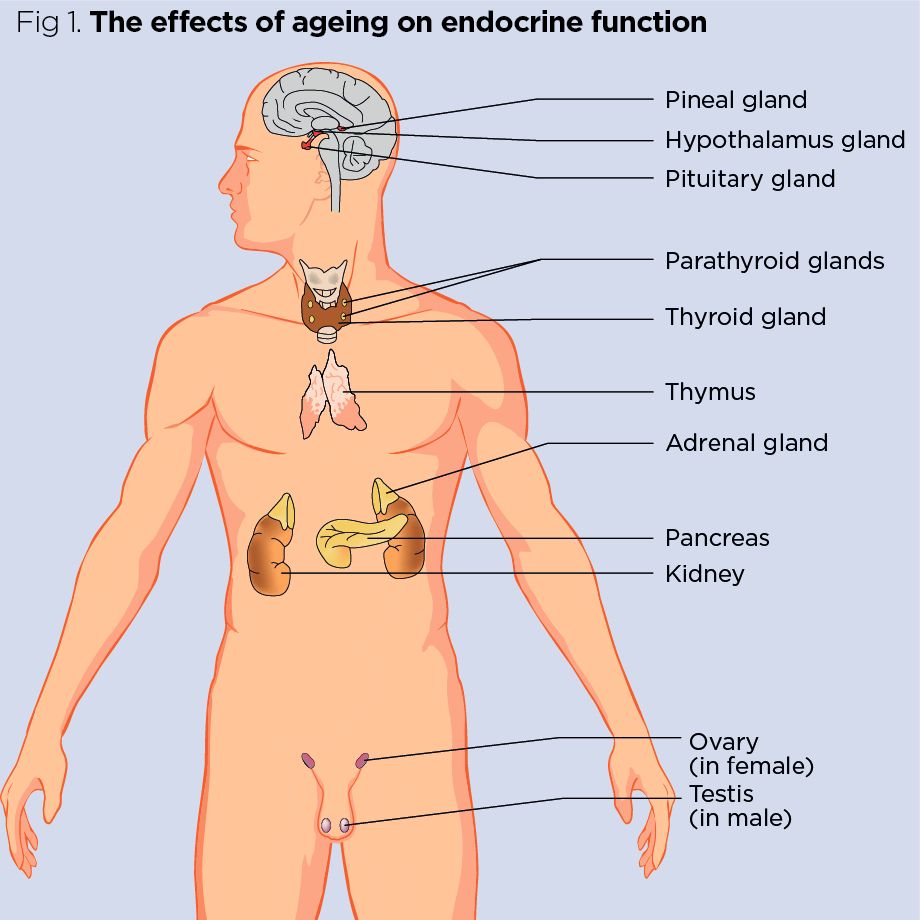
Figure 17.11. Pancreas histology. A magnified photomicrograph of the pancreatic islets. The pancreatic islets can be clearly distinguished from the exocrine tissue that surrounds them. Credit: Photo by Polarlys on Wikimedia Commons, license CC-BY
The two main hormones released from the pancreatic islet cells are insulin and glucagon. Insulin is released from beta cells in the pancreatic islets, and has the actions to increase the uptake of glucose from the blood into tissues. This results in decreased glucose in the blood plasma. Glucagon is released from alpha cells, and has the effect to release glucose from body cells into the plasma, resulting in increased blood glucose levels. Somatostatin is released from delta cells in the islets. The action of somatostatin is generally inhibitory. In the digestive system, somatostatin acts to inhibit the release of both insulin and glucagon. In the anterior pituitary (discussed above), somatostatin inhibits the release of growth hormone (GH) from the anterior pituitary.
Reproductive Glands: Ovaries and Testes
Figure 17.12 Ovaries. Anterior view, shown in blue.
The ovaries (Figure 17.12) are the female gonads that produce both gametes (cells that play a role in reproduction) and hormones. They are small, paired glands located deep in the pelvic cavity, and the gametes they produce are called oocytes. The production of oocytes is dependent on the hormonal activity of the anterior pituitary. The oocytes are released from the ovary and travel through the uterine tube to the uterus.
Figure 17.13 Folliculogenesis. Secondary follicle developing in the cortex of ovary. Electron micrograph of a secondary follicle, the oocyte, theca cells (thecae folliculi), and developing antrum are clearly visible. EM × 1100. (Micrograph provided by the Regents of University of Michigan Medical School © 2012)
Ooctyes develop within follicles in the cortex of the ovary (Figure 17. 13). The process where oocytes are released from the ovary is called ovulation.
13). The process where oocytes are released from the ovary is called ovulation.
The ovary also produces female sex hormones called estrogens. There are three estrogens produced by the ovary: estrone, estradiol and estriol. All the estrogens are classified as steroids due to their chemical structure. Estrogens regulate the ovarian and menstrual cycles, influencing the maturation of the oocyte in the ovary, the release of the oocyte during ovulation, and the changes seen in the uterus as it prepares to receive a potential zygote. Estrogens are also important in the development of secondary sex characteristics like breast development and fat redistribution. Another hormone produced by the ovary is progesterone, a hormone that plays important roles in preparing the body for pregnancy in the event that an oocyte is fertilized by a sperm cell.
Figure 17.14. Testes. Lateral view, shown in blue.
The testes are male gonads (Figure 17. 14) , and like the ovaries in females they produce both gametes (sperm) and hormones. The testes are also small paired structures, however they are located outside the pelvic cavity in males. Sperm that are produced in the testes must travel back into the pelvic cavity through a long duct system before being released from the body via the penis as part of the semen. The production of sperm in the male is regulated similarly to the oocyte production in females, via hormones that are released from the anterior pituitary.
14) , and like the ovaries in females they produce both gametes (sperm) and hormones. The testes are also small paired structures, however they are located outside the pelvic cavity in males. Sperm that are produced in the testes must travel back into the pelvic cavity through a long duct system before being released from the body via the penis as part of the semen. The production of sperm in the male is regulated similarly to the oocyte production in females, via hormones that are released from the anterior pituitary.
Figure 17.15 Cross section of a seminiferous tubule within testis. In this electron micrograph of a cross-section of a seminiferous tubule from a rat, the lumen is the light-shaded area in the center of the image. The location of the primary spermatocytes is near the basement membrane, and the early spermatids are approaching the lumen (tissue source: rat). EM × 900. (Micrograph provided by the Regents of University of Michigan Medical School © 2012)
Sperm is produced within the seminiferous tubule (Figure 17.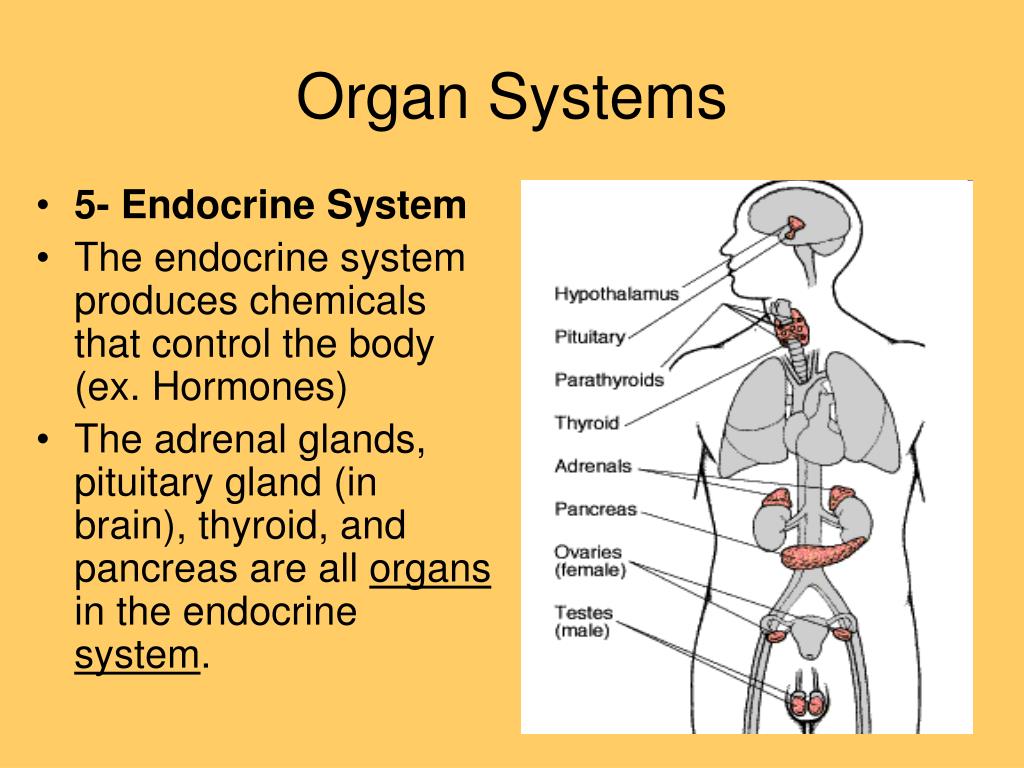 15). Maturing sperm move through an extensive duct system both in the testis and to / through the pelvic cavity.
15). Maturing sperm move through an extensive duct system both in the testis and to / through the pelvic cavity.
The main male sex hormone produced by the testes is testosterone. Like the estrogens from the ovary, testosterone is a steroid hormone that plays important roles in the development of secondary sex characteristics in males (increased bone and muscle mass, deepening voice, facial hair). Testosterone also influences the development of the sperm. A second hormone produced by the testes is inhibin, which plays a role in regulating the development and maturation of sperm.
Pituitary Gland and Hypothalamus
Figure 17.16 Pituitary gland and hypothalamus. The photo of the brain shows the location of the pituitary gland relative to the brain. Lateral view.. Credit: Wikimedia Commons, license Public Domain
The pituitary gland extends below the inferior aspect of the brain, inferior to the hypothalamus (Figure 17.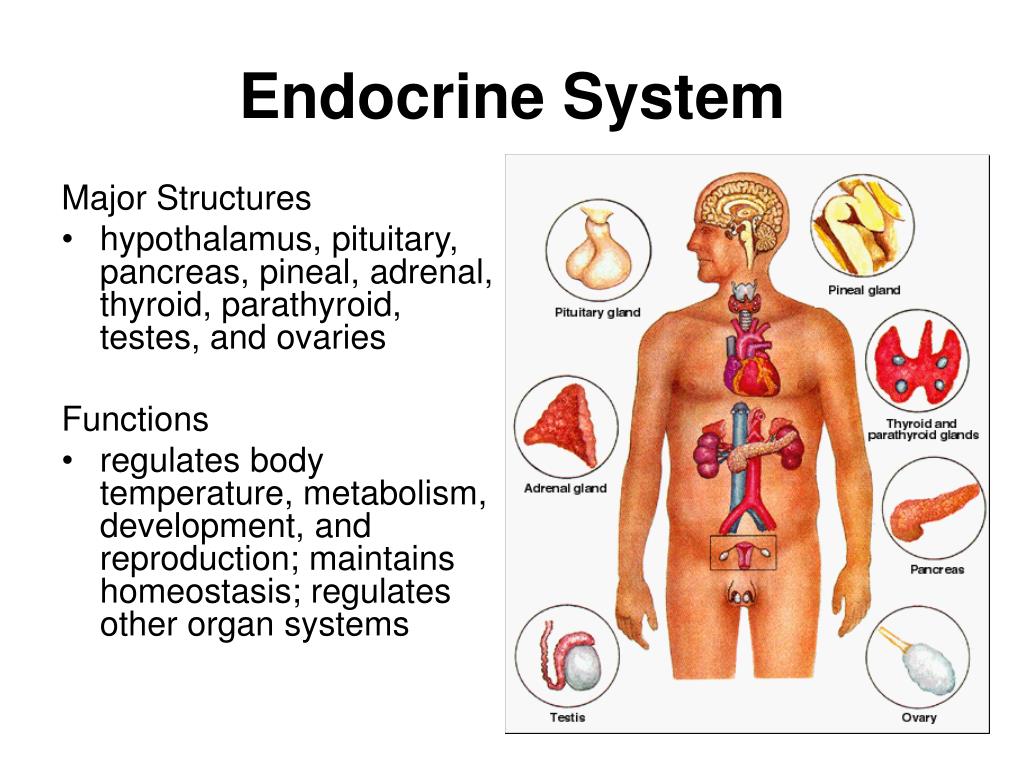 16). We describe the pituitary gland as the “master gland” because it secretes hormones that regulate the activity of other endocrine glands, in addition to hormones that act on other cells and tissues in the body.
16). We describe the pituitary gland as the “master gland” because it secretes hormones that regulate the activity of other endocrine glands, in addition to hormones that act on other cells and tissues in the body.
Figure 17.17 The pituitary complex. The diagram shows the relationship between the pituitary lobes and the hypothalamus by color-coding the individual components.
Pituitary Complex The hypothalamus region lies inferior and anterior to the thalamus (Figure 17.17). It connects to the pituitary gland by the stalk-like infundibulum. The pituitary gland consists of an anterior and posterior lobe, with each lobe secreting different hormones in response to signals from the hypothalamus. The pituitary gland is composed of 2 distinct regions, or lobes: the ANTERIOR lobe (also called the adenohypophysis; sometimes called the pars distalis) and the POSTERIOR lobe (also called the neurohypophysis; sometimes called the pars nervosa). The differences between the two lobes can be seen easily when the tissue is examined under the microscope.
The differences between the two lobes can be seen easily when the tissue is examined under the microscope.
The posterior lobe is an extension of the brain tissue in the hypothalamus. This means that the posterior lobe is actually nervous tissue and not true glandular tissue. Hormones are synthesized in cell bodies in the hypothalamus, then transported to the axon terminals in the posterior lobe. These hormones are released from the axon terminals into the bloodstream. The anterior lobe is true glandular tissue: hormones are synthesized, stored and released from the cells here.
Hormones Secreted from the Pituitary Gland
Figure 17.18 The pituitary gland or hypophysis. Anterior and posterior lobes are shown. The lobes are distinguishable microscopically due to color differences as drawn in this figure. Credit: Gray’s Anatomy (1918) on Wikimedia Commons, license Public Domain.
Two hormones are secreted from the posterior pituitary:
- Antidiuretic hormone (ADH)
- Oxytocin
Neurosecretory cells in the hypothalamus release oxytocin (OT) or ADH into the posterior lobe of the pituitary gland. These hormones are stored or released into the blood via the capillary plexus (Figure 17.19).
These hormones are stored or released into the blood via the capillary plexus (Figure 17.19).
Figure 17.19 ADH and oxytocin (OT). Synthesized in the hypothalamus and then transported to the posterior pituitary for release to the blood.
Six hormones are released from the anterior pituitary:
- Growth hormone (GH)
- Prolactin
- Follicle-stimulating hormone (FSH)
- Luteinizing hormone (LH)
- Adrenocorticotropic hormone (ACTH)
- Thyroid-stimulating hormone (TSH)
Figure 17.20 Anterior pituitary hormones. The image shows hormones from the hypothalamus being sent directly to the anterior pituitary via the hypophyseal portal system, where they act on the cells of the that gland to stimulate or inhibit their release.
The anterior pituitary is composed of three distinct cell types that can be seen more easily when they are stained with acidic or basic dyes. ACIDOPHILS are cells that appear red when stained with acidic dyes. BASOPHILS are cells that appear blue when stained with basic dyes. CHROMOPHOBES are cells that remain uncolored in the presence of either type of dye. The hormones that are released from the anterior pituitary are associated with either acidophils or basophils. The table below (Post-Laboratory Questions, #4) shows you which hormones are released from each type of cell.
BASOPHILS are cells that appear blue when stained with basic dyes. CHROMOPHOBES are cells that remain uncolored in the presence of either type of dye. The hormones that are released from the anterior pituitary are associated with either acidophils or basophils. The table below (Post-Laboratory Questions, #4) shows you which hormones are released from each type of cell.
REGULATION OF THE PITUITARY AND TARGET ORGANS / GLANDS
Feedback Loops
The release of hormones in the endocrine system are regulated through feedback mechanisms. Negative feedback is used to inhibit further hormone secretion: when a sufficient amount of hormone is released, it “feeds back” to decrease or prevent further release. In other words, the gland has released sufficient hormone to produce the desired effect, so further hormone release is inhibited. Because the hypothalamus and pituitary glands are regulating the activity of endocrine glands, they are also subject to feedback mechanisms and their activity will be altered in response to levels of other hormones.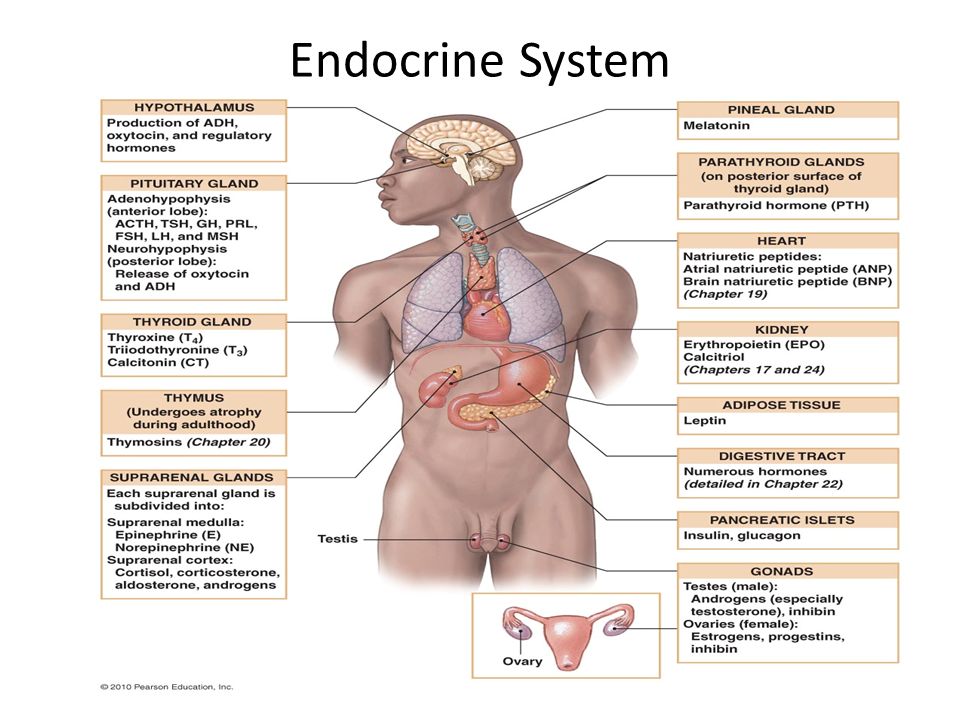
The regulation of the anterior pituitary involves the release of hormones from the hypothalamus; regulation of the endocrine glands involves the release of hormones from the anterior pituitary. Further, hormones released from the endocrine glands interact with both the hypothalamus and the pituitary to regulate their activity, in a classic arrangement known as a feedback loop.
The pathways of three hormones are examined in this activity: thyroid hormone, cortisol and testosterone. The hormonal pathways are similar in all three cases. In each case: the hypothalamus secretes a releasing hormone to regulate the activity of the anterior pituitary gland the anterior pituitary then secretes hormones that regulate the activity of a target gland (the thyroid gland, the adrenal gland or the testis) the hormones released from the target glands “feed back” to the anterior pituitary and the hypothalamus to inhibit the further release of those hormones. The hypothalamus is like a command center: if it is not stimulated, it will not secrete releasing hormones to stimulate the anterior pituitary, which in turn will not stimulate the target glands.
Pre-Laboratory Questions
After reviewing the Background information please answer the following questions.
- Endocrine glands ________.
- secrete hormones that travel through a duct to the target organs
- release neurotransmitters into the synaptic cleft
- secrete chemical messengers that travel in the bloodstream
- include sebaceous glands and sweat glands
- Chemical signaling that affects neighboring cells is called ________.
- autocrine
- paracrine
- endocrine
- neuron
- A student is in a car accident, and although not hurt, immediately experiences pupil dilation, increased heart rate, and rapid breathing. What type of endocrine system stimulus did the student receive?
- humoral
- hormonal
- neural
- positive feedback
- Which of the following is an anterior pituitary hormone?
- ADH
- oxytocin
- TSH
- Cortisol
- How many hormones are produced by the posterior pituitary?
- 0
- 1
- 2
- 6
- The adrenal glands are attached superiorly to which organ?
- thyroid
- liver
- kidneys
- hypothalamus
- The gonads produce what class of hormones?
- amine hormones
- peptide hormones
- steroid hormones
- catecholamines
- If an autoimmune disorder targets the alpha cells, production of which hormone would be directly affected?
- somatostatin
- pancreatic polypeptide
- insulin
- glucagon
- Exercise 1 Identify major endocrine glands and their locations
- Exercise 2 Name the main hormones secreted by each major endocrine gland
- Exercise 3 Describe the function of the main hormones
- Exercise 4 Identify microscopic structures of endocrine glands
Exercise 1 Identify major endocrine glands and their locations
Required Materials
- Torso Model
- Organs of the Endocrine System board model
- The Endocrine System poster
- Post-it notes
- Labeling tape
Procedure
- This activity requires students identifying the locations of various Endocrine Glands using Torso Models.
 Students will also be able to explore respective structures of the Endocrine Glands using board model depicting various endocrine glands.
Students will also be able to explore respective structures of the Endocrine Glands using board model depicting various endocrine glands. - Use the board model to identify and become familiar with the anatomy of the following endocrine glands: pituitary gland, thyroid gland, parathyroid glands, pancreas, adrenal gland, testis, ovary, pancreas. Place a label on each (using post-it notes) and take a picture. Insert the labeled picture in the space below. Alternatively, you can sketch and label.
- Now that you know what these glands look like, find them on the torso model. Use the post-it notes to label them. Take a picture of the labeled glands on the torso model and insert in the space below. Alternatively, you can sketch and label.
Exercise 2 Name the main hormones secreted by each major endocrine gland
Required Materials
- Endocrine system poster
Procedure
Students will be utilizing this lab manual and OpenStax Human Anatomy and Physiology Text resources as well as the Endocrine System Posterto learn and identify hormones secreted by various endocrine glands. For each gland listed in the table below, find and list the hormones it produces.
For each gland listed in the table below, find and list the hormones it produces.
| Gland | Hormones produced |
| Pituitary (posterior) | |
| Pituitary (anterior) | |
| Thyroid | |
| Parathyroid | |
| Pancreas | |
| Adrenal | |
| Ovary | |
| Testis |
Exercise 3 Describe the function of the main hormones
Required Materials
- None
Procedure
Students will be utilizing this lab manual and OpenStax Human Anatomy and Physiology Text resources to learn and identify functions of some important hormones in the table below.
| Hormones | Hormone name and function |
| Pituitary (posterior) hormones | 1. 2. |
| Pituitary (anterior) hormones | 1.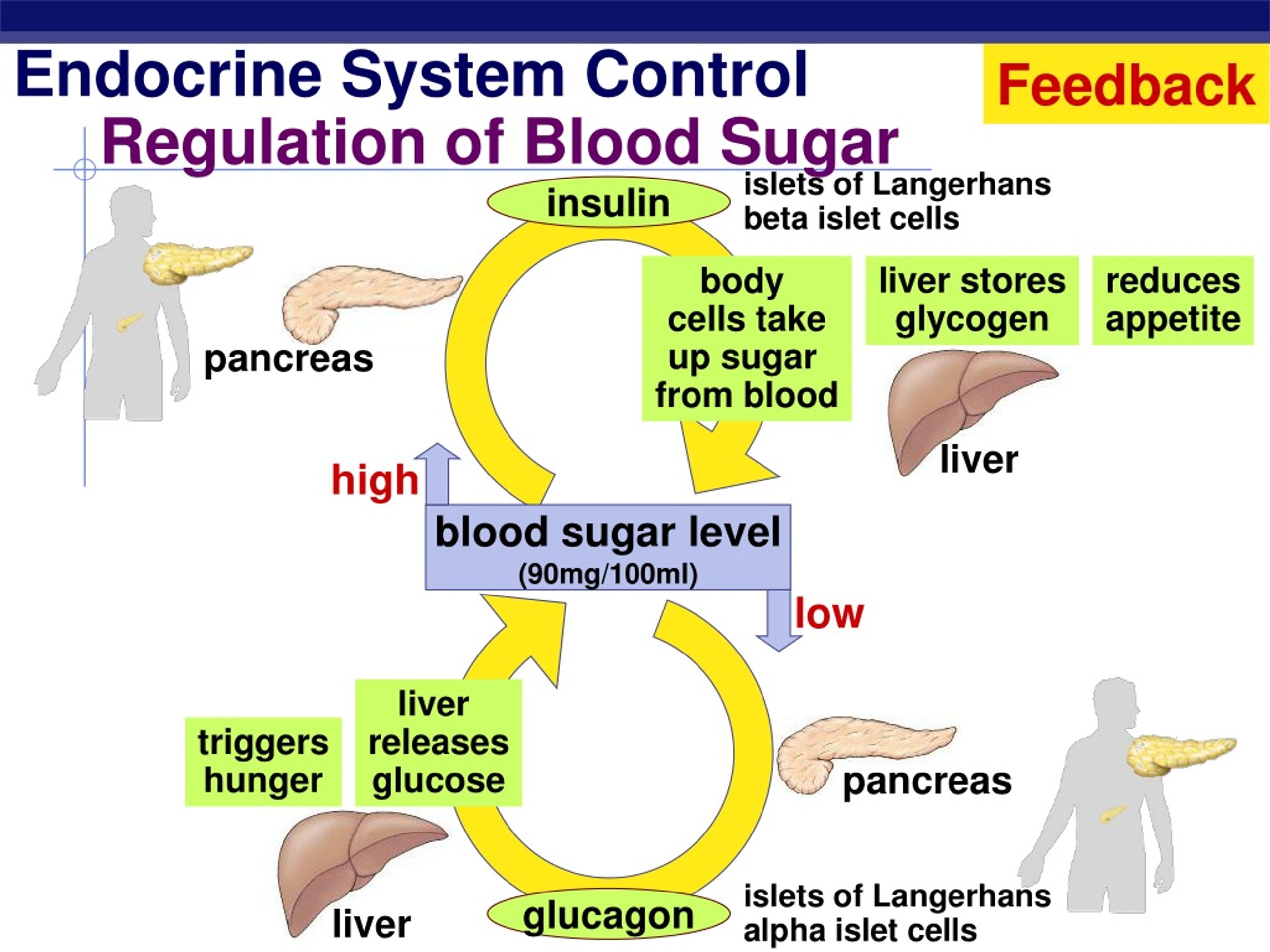 2. 3. 4. 5. 6. |
| Thyroid | 1. 2. |
| Parathyroid | 1. |
| Pancreas | 1. 2. 3. |
| Adrenal | 1. 2. 3. |
| Ovary | 1. 2. |
| Testis | 1. |
Exercise 4 Identify microscopic structures of endocrine glands
Required Materials
- Compound microscope
- Microscope lens paper
- Microscope lens solution
- Microscope immersion oil
- Slide of Adrenal Section (human) (Figure 17.4)
- Mammal Thyroid and Parathyroid Glands slide (Figure 17.6 thyroid, 17.8 parathyroid)
- Human Pancreas slide (Figure 17.11)
- Slide of Mammal Ovarian Follicles (Figure 17.13)
- Human Testis slide (Figure 17.15)
- Hypophysis (pituitary gland) slide (Figure 17.18)
Procedure
For each of the 6 endocrine gland slides listed above, follow these instructions:
- Ask your instructor for a prepared slide.
 Refer to the Figures indicated above for each slide to see what you expect to observe.
Refer to the Figures indicated above for each slide to see what you expect to observe. - Place it on the stage of microscope and bring it into focus using low power (4 x 10 magnification).
- Study tissue on slide. Move slide vertically and horizontally.
- Change the magnification to high power (10 x 10).
- Draw the tissues at low and high magnification to show the cell and tissue structure as best as you can. Label.
Adrenal
Thyroid
Parathyroid
Pancreas
Ovarian follicle
Testis
Hypophysis (pituitary gland)
Post-laboratory Questions
- Hormones of the Pancreas. Fill in the below table with the hormone that is released from each cell type found in the pancreatic islets. In the last column, briefly describe the actions of each hormone.

| Cell type | Hormone released | Actions |
| Alpha cells
| ||
| Beta cells
| ||
| Delta cells
|
- Sex Hormones. Fill in the below table with the hormone that is released from each gonad. Note that there is more than one hormone released from each gonad. In the last column, briefly describe the actions of each hormone.
| Gonad | Hormone released | Actions – on gametes and on other cells in the body |
| Testes
| ||
| Ovary
| ||
- Summary of Hormone Action.
 For each hormone in the left-hand column, fill in the table with the target cells or tissues on which each hormone acts; the effects of the hormones on those target cells or organs; and the stimulus for the release of each hormone.
For each hormone in the left-hand column, fill in the table with the target cells or tissues on which each hormone acts; the effects of the hormones on those target cells or organs; and the stimulus for the release of each hormone.
| Thyroid and Parathyroid Hormones | |||
| Hormone | Stimulus for Release | Target Cells / Tissues | Effects |
| Thyroid Hormones (T3 and T4)
| |||
| Calcitonin
| |||
| Parathyroid Hormone
|
- Source, Actions, and Hypothalamic Regulation of the Anterior Pituitary. Fill in the table with the actions of each hormone, and the name of the hypothalamic hormone(s) that regulate their release.
| Pituitary Gland | Cells | Hormones Produced | Action of Hormones | Hypothalamic releasing or inhibiting hormone |
| Anterior (adenohypophysis)
| Acidophils
| GH Prolactin
| ||
| Basophils | FSH LH ACTH TSH
| |||
| Chromophobes | NA | NA | NA | |
| Posterior (neurohypophysis) | Axon terminals
| ADH | NA | |
| Axon terminals
| Oxytocin | NA | ||
A List of Useful Organs
[Click on the image to Enlarge]
Are you familiar with the following internal organs and glands?
Was that a yes we hear? Well, you should be familiar with at least some of them. All of them are quite useful. We seldom think about these essential internal structures. Your endocrine system is a simple network of tissues tasked to produce hormones which alter the function of other glands and organs. Let’s talk about their various roles in our bodies.
All of them are quite useful. We seldom think about these essential internal structures. Your endocrine system is a simple network of tissues tasked to produce hormones which alter the function of other glands and organs. Let’s talk about their various roles in our bodies.
| Organ/Gland | What Does It Do? | Signs Your Organ Is Not Doing So Well |
| Adrenal glands | You have 2 adrenal glands. One on top of each kidney. They make hormones that:
| You may feel the following signs and symptoms if you’re adrenal glands aren’t performing well:
|
| Hypothalamus | This structure is located in your brain. It’s like an interpreter between your endocrine system and your nervous system. It makes sure that what you think and feel is carried out by your endocrine system. It’s also the boss of your pituitary gland. Besides controlling the pituitary gland, it also handles…
| Anything which upsets your hypothalamus may also affect your pituitary and the rest of the endocrine organs. So if it’s troubled your hypothalamus can produce the same signs as the other glands show individually when they are sick.  |
| Ovaries | For females only. Located deep in a woman’s pelvic cavity, the ovaries are responsible for production of the female hormones (oestrogen and progesterone) and eggs. Female hormones have a lot to offer and keep themselves busy giving women their feminising looks: breast growth, fat relocation to hips and buttocks, menstrual cycle regulation, pregnancy, and that growth spurt during puberty. | If your body doesn’t produce enough female hormones, the following happens:
|
| Pancreas | The sweetest of all the endocrine glands simply because it’s the main one responsible for the proper use of glucose. It’s located inside your abdominal cavity, beside its neighbours, your spleen and the first part of your small intestine (duodenum). It secretes insulin which is important for moving glucose from the bloodstream into the tissues. | If your pancreas doesn’t produce enough insulin, you will suffer from the effects of excess sugar leading to diabetes mellitus. Signs of diabetes mellitus include: you pee frequently, you drink water excessively, and you eat a lot of food. These are some of the most common symptoms of diabetes. Your pancreas also produces digestive enzymes so if it’s unwell, you can also experience poor digestive function. |
| Parathyroid | Your parathyroid glands are actually four glands that have set up camp in your thyroid gland. These four best-of-friends glands produce a hormone that helps regulate calcium in your body and blood. | Clues that may point toward an overzealous parathyroid gland include osteoporosis (brittle bones) and a feeling of being too tired most of the time. Tired, not lazy, there’s a difference! |
| Pineal gland | The pineal gland is comfortably relaxing in the middle of your brain. It produces melatonin, a hormone responsible for helping you sleep at night and wake up in the morning. It acts as your internal clock and also directs your hunger and thirst. | Difficulty falling asleep and not getting good quality sleep are the main clues that your pineal gland may be turning over to the dark side. |
| Pituitary gland | Your pituitary gland is much like a talent manager located in your brain. It manages other endocrine glands while taking orders from your hypothalamus.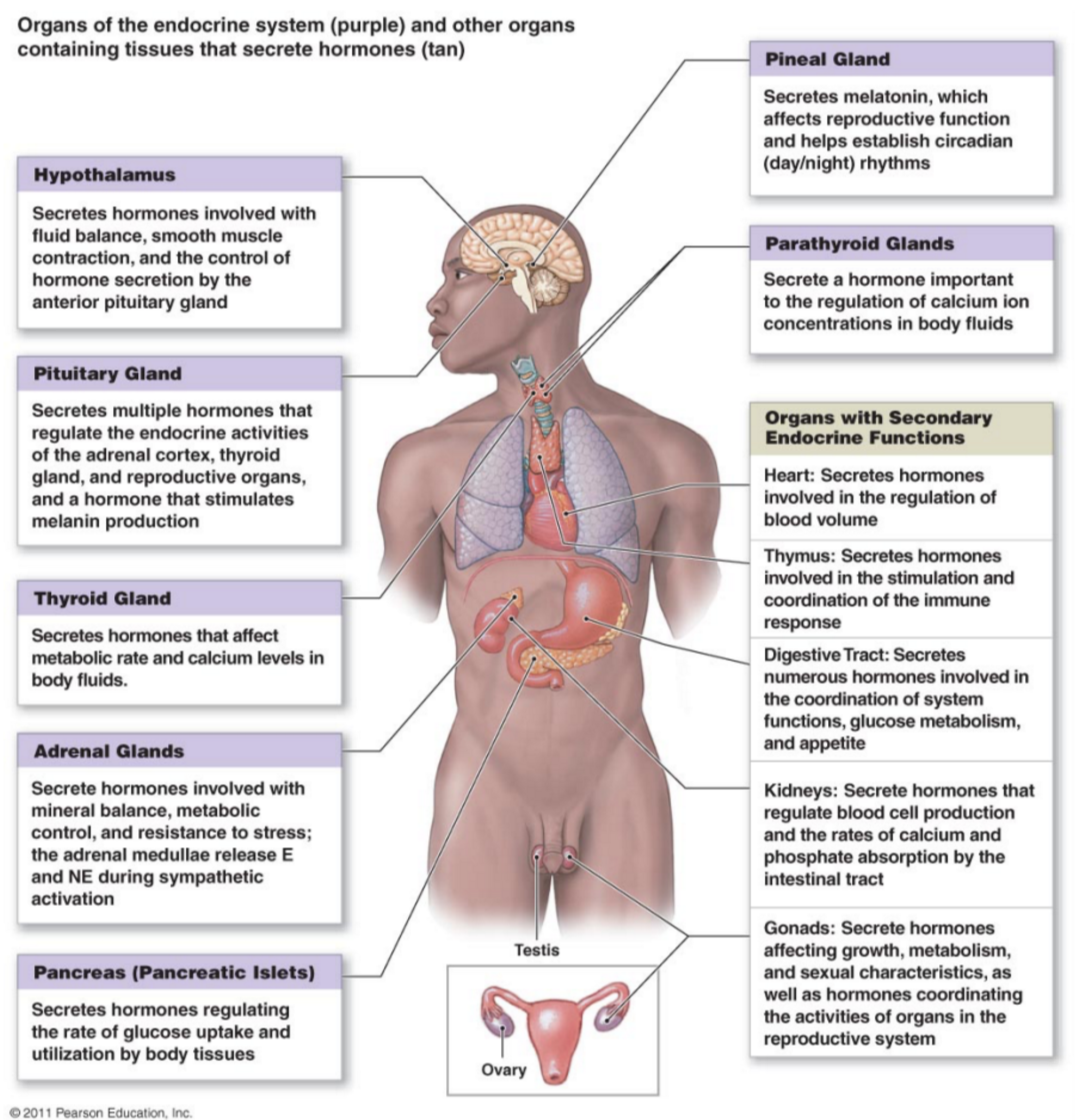 | Anything which upsets your pituitary gland may also upset the rest of the endocrine organs. It follows that it can produce the same clues as other organs when they fall ill individually. One unique sign that your pituitary gland may be sick is gigantism. In gigantism, there’s an excess of growth hormone from your pituitary allowing you to grow abnormally large. |
| Testes | For males only. Your testes are located inside your scrotum. They produce the male hormone, testosterone. | If your body doesn’t produce enough male hormone, the following happens:
|
| Thymus | Your thymus is thought of more as part of your immune system than your endocrine system. It’s located behind your sternum. After you hit puberty, your thymus is no longer needed and begins to shrink and slowly gets replaced by fat tissue. Your thymus is responsible for producing immune cells to fight infections. | A poorly functioning thymus manifests itself as you being susceptible to multiple infections early in your childhood. |
| Thyroid | It’s found on the lower front of your neck. Your thyroid is shaped like a butterfly and produces hormones that contribute to how fast your cells get fuel from food and use it for energy. | Thyroid hormones could manifest symptoms in one of two directions: an excess or deficiency of hormones. Excess: your heart pounds in your chest (palpitations), and is very rapid, you may have tremors and heat intolerance. Deficiency: you easily get tired, have dry skin, constipation, cold intolerance and weight gain. |
| Copyright © Return2Health Limited. All Rights Reserved. | ||
In unity (of organs), there is strength…
All of these structures manage hidden tasks and responsibilities inside your body on a daily basis. We don’t really notice them accomplishing essential jobs for us. But if one organ or gland fails, it will invariably and eventually have its effects on the rest of the pack as well. That’s why you should take good care of all of them.
Most of the organs we’ve discussed above secrete hormones which can affect the way you think, digest, feel, exercise, sleep and much more. Why on Earth should we ignore them? Keep an eye out for the possible signs of them becoming unwell and unable to perform their functions. Those are your cues to go see your healthcare practitioner.
Why on Earth should we ignore them? Keep an eye out for the possible signs of them becoming unwell and unable to perform their functions. Those are your cues to go see your healthcare practitioner.
Related Links
References
- Hall, J. E. (2016). Guyton and Hall textbook of medical physiology (13th ed.). Philadelphia, PA: Elsevier.
- Silverthorn, D. U., & Silverthorn, A. C. (2016). Human physiology: an integrated approach (seventh ed.). San Francisco: Pearson.
- https://medlineplus.gov/ency/article/001202.htm
- https://www.mayoclinic.org/diseases-conditions/male-hypogonadism/symptoms-causes/dxc-20248457
- https://medlineplus.gov/ency/article/001195.htm
- https://www.ucsfhealth.org/conditions/diabetes_mellitus/signs_and_symptoms.html
- https://www.endocrineweb.com/conditions/hyperparathyroidism/hyperparathyroidism
- https://www.britannica.com/science/pineal-gland
- https://www.
 britannica.com/science/human-endocrine-system
britannica.com/science/human-endocrine-system - https://act.downstate.edu/courseware/histomanual/endocrine.html
List of contraindications to donating blood and its components
Home → Hospital → Blood transfusion station → List of contraindications to donating blood and its components
List of contraindications to donating blood and its components
Do you have questions about blood donation?
call (343) 351-11-14
I. ABSOLUTE CONTRA-INDICATIONS
(withdrawal from donation regardless of the duration of the disease and the results of treatment)
1. Bloodborne diseases:
1.1. Infectious:
– AIDS, HIV carriers and people at risk (homosexuals, drug addicts, prostitutes)
– Syphilis, congenital or acquired HCV antibodies)
– Tuberculosis, all forms
– Brucellosis
– Typhus
– Tularemia
– Leprosy.
1.2. Parasitic:
– Echinococcosis
– Toxoplasmosis
– Trypanosomiasis
– Filariasis
– Rishta
– Leishmaniasis.
2. Somatic diseases:
2.1. Malignant neoplasms.
2.2. Diseases of the blood.
2.3. Organic diseases of the central nervous system.
2.4. Complete absence of hearing and speech.
2.5. Mental illness.
2.6. Drug addiction, alcoholism.
2.7. Cardiovascular diseases:
– hypertension II – III stage.
– ischemic heart disease
– atherosclerosis, atherosclerotic cardiosclerosis
– obliterating endoarteritis, nonspecific aortoarteritis, recurrent thrombophlebitis
– endocarditis, myocarditis
– heart disease.
2. 8. Respiratory diseases:
8. Respiratory diseases:
– bronchial asthma
– bronchiectasis, pulmonary emphysema, obstructive bronchitis, diffuse pneumosclerosis in the stage of decompensation.
2.9. Diseases of the digestive system:
– Achilles gastritis
– peptic ulcer of the stomach and duodenum.
2.10. Diseases of the liver and biliary tract:
– chronic liver diseases, including toxic nature and unclear etiology
– calculous cholecystitis with recurrent attacks and cholangitis phenomena
– cirrhosis of the liver.
2.11. Diseases of the kidneys and urinary tract in the stage of decompensation:
– diffuse and focal lesions of the kidneys
– urolithiasis.
2.12. Diffuse connective tissue diseases.
2.13. Radiation sickness.
2.14. Diseases of the endocrine system in case of severe dysfunction and metabolism.
2.15. Diseases of ENT-organs:
– ozena
– other acute and chronic severe purulent-inflammatory diseases.
2.16. Eye diseases:
– residual effects of uveitis (iritis, iridocyclitis, chorioretinitis)
– high myopia (6 D and more)
– trachoma
– total blindness.
2.17. Skin diseases:
– common inflammatory and infectious skin diseases
– Generalized psoriasis, erythroderma, eczema, pyoderma, sicosis, red lupus, bubble dermatoses
– fungal skin lesions (microsporia, trichophytosis, favus, epidermophytic) and internal organs (deep mycoses)
– pustular diseases of the skin (pyoderma, furunculosis, sikosis, sikosis ).
2.18. Osteomyelitis acute and chronic.
2.19. Surgical interventions for organ resection (stomach, kidney, gallbladder, spleen, ovaries, uterus, etc.) and organ and tissue transplantation.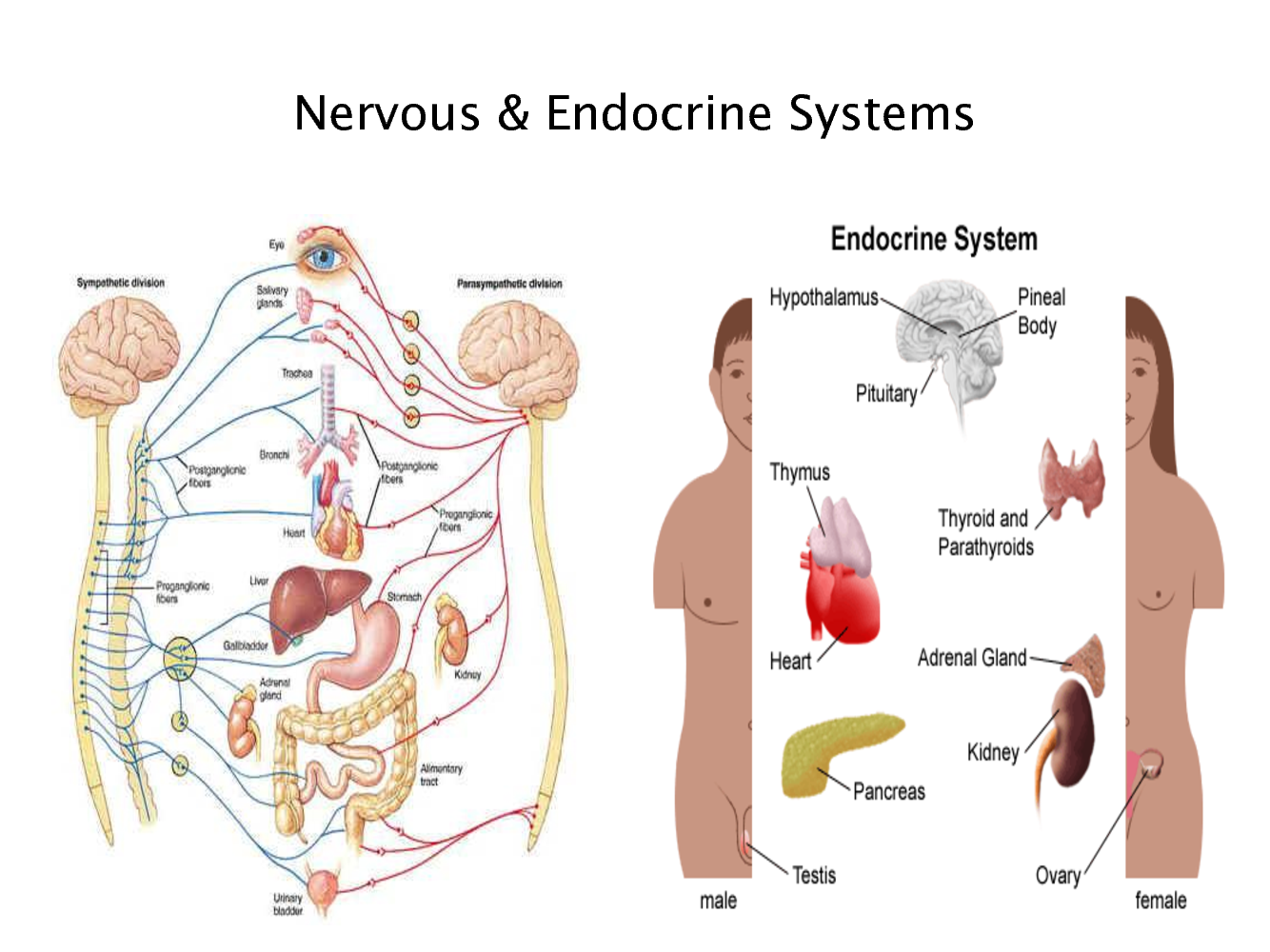
II. TEMPORARY CONTRAINDICATIONS
Items | Deadline for withdrawal from donation |
1. Factors of infection with bloodborne diseases: | 6 months |
1.2. Surgical interventions, incl. abortions (a medical certificate is required) (extracts from the medical history) about the nature and date of the operation) | 6 months from the date of surgery |
1.3. Tattooing or acupuncture treatment | 1 year from the end of procedures |
1.4. Stay on business trips for more than 2 months | 6 months |
1. | 3 years |
1.6. Contact with patients with hepatitis: | 3 months |
2. Past diseases: | 3 years 1 year 1 month after recovery |
2.2. Other infectious diseases not listed in the “Absolute contraindications” section and section 2.1 of this section | 6 months after recovery |
2. | 10 days |
2.4. Acute or chronic inflammatory processes in the acute stage, regardless of localization | 1 month after stopping the acute period |
2.5. Vegeto – vascular dystonia | 1 month |
2.6. Allergic diseases in the acute stage | 2 months after stopping the acute period |
3. Pregnancy and lactation period | 1 year postpartum, 3 months post-lactation |
4. Period of menstruation | 5 days from the end of menstruation |
5. Vaccinations: | 10 days 1 month 1 year |
6. |

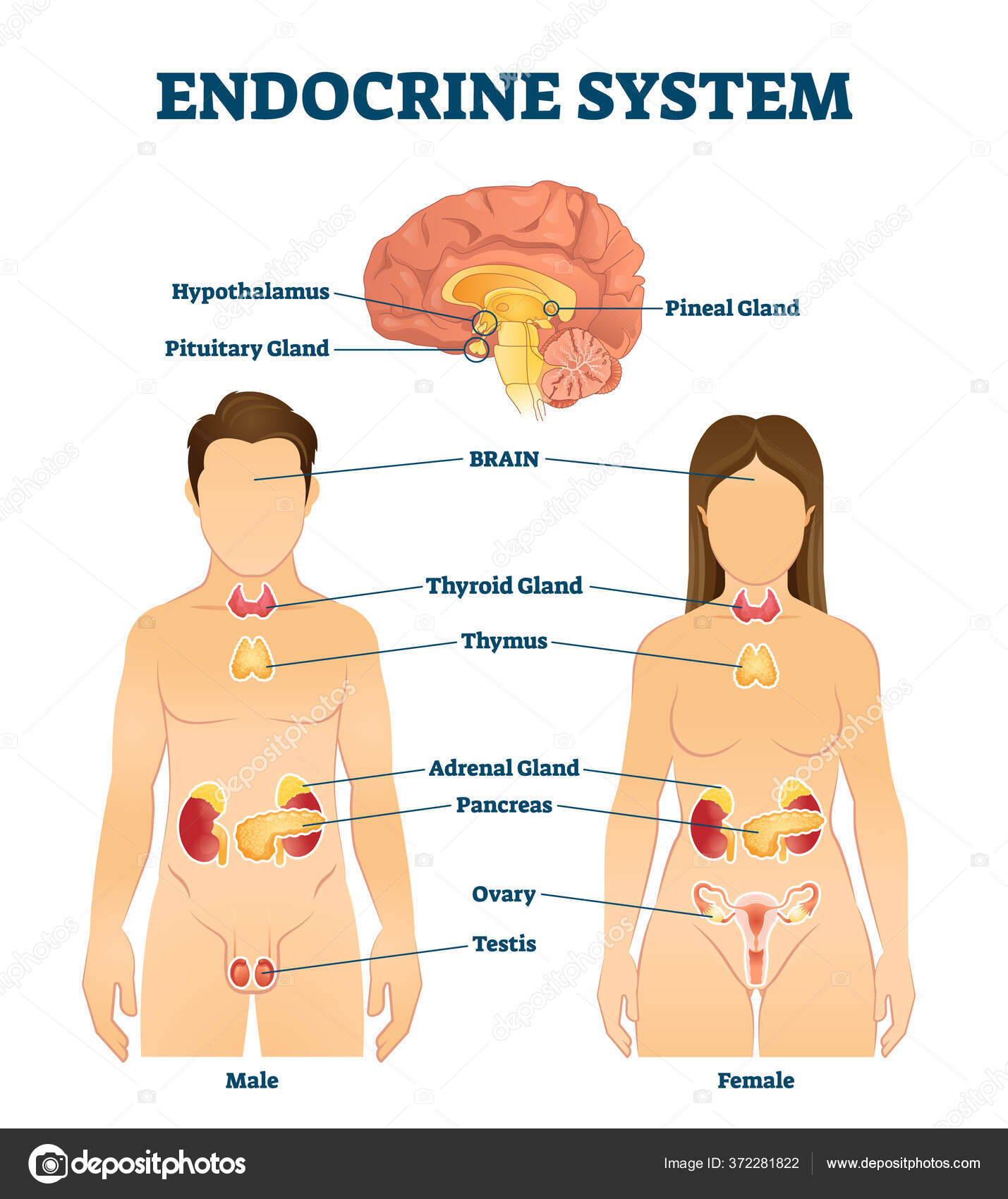
 Students will also be able to explore respective structures of the Endocrine Glands using board model depicting various endocrine glands.
Students will also be able to explore respective structures of the Endocrine Glands using board model depicting various endocrine glands.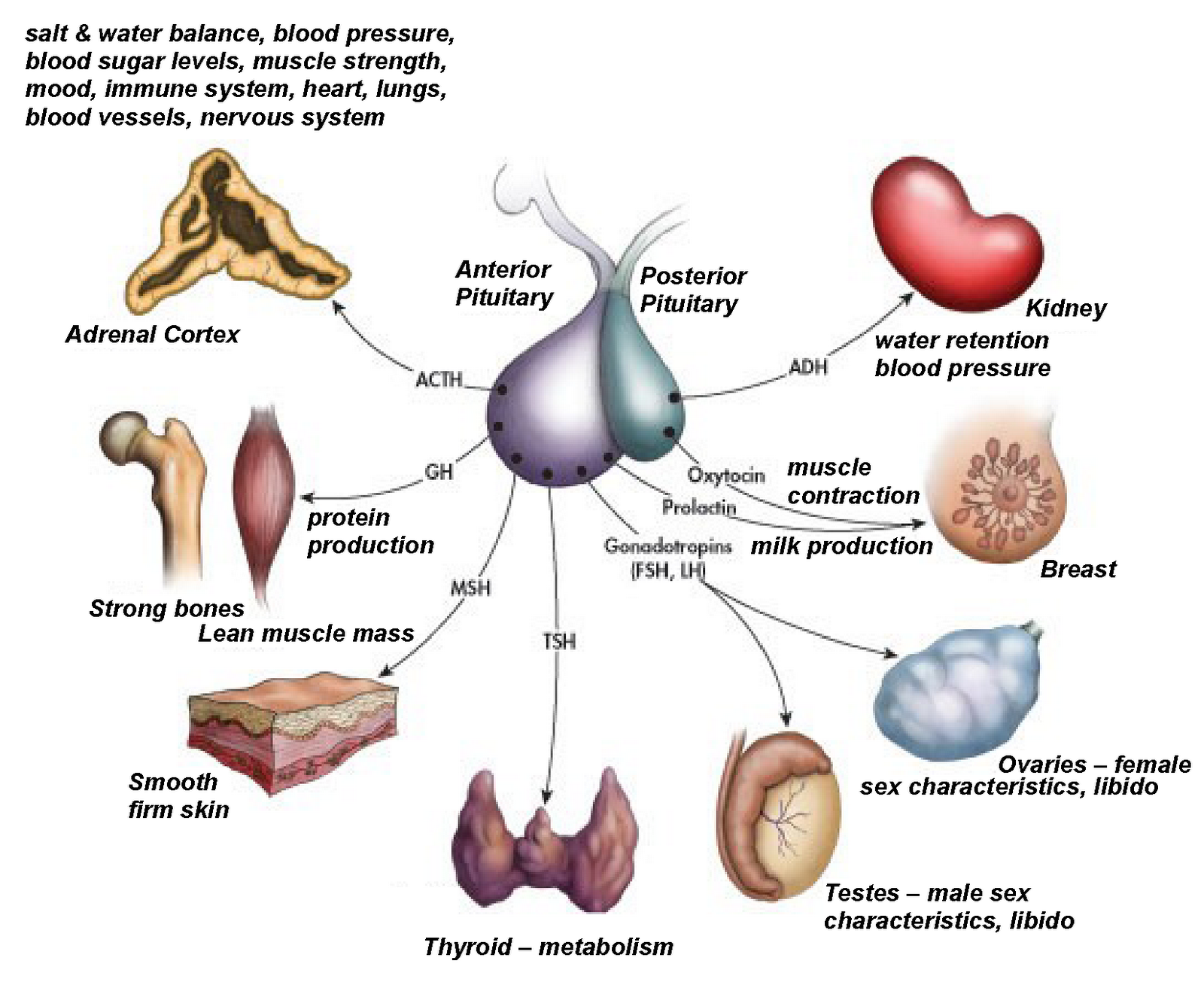 Refer to the Figures indicated above for each slide to see what you expect to observe.
Refer to the Figures indicated above for each slide to see what you expect to observe.
 For each hormone in the left-hand column, fill in the table with the target cells or tissues on which each hormone acts; the effects of the hormones on those target cells or organs; and the stimulus for the release of each hormone.
For each hormone in the left-hand column, fill in the table with the target cells or tissues on which each hormone acts; the effects of the hormones on those target cells or organs; and the stimulus for the release of each hormone.

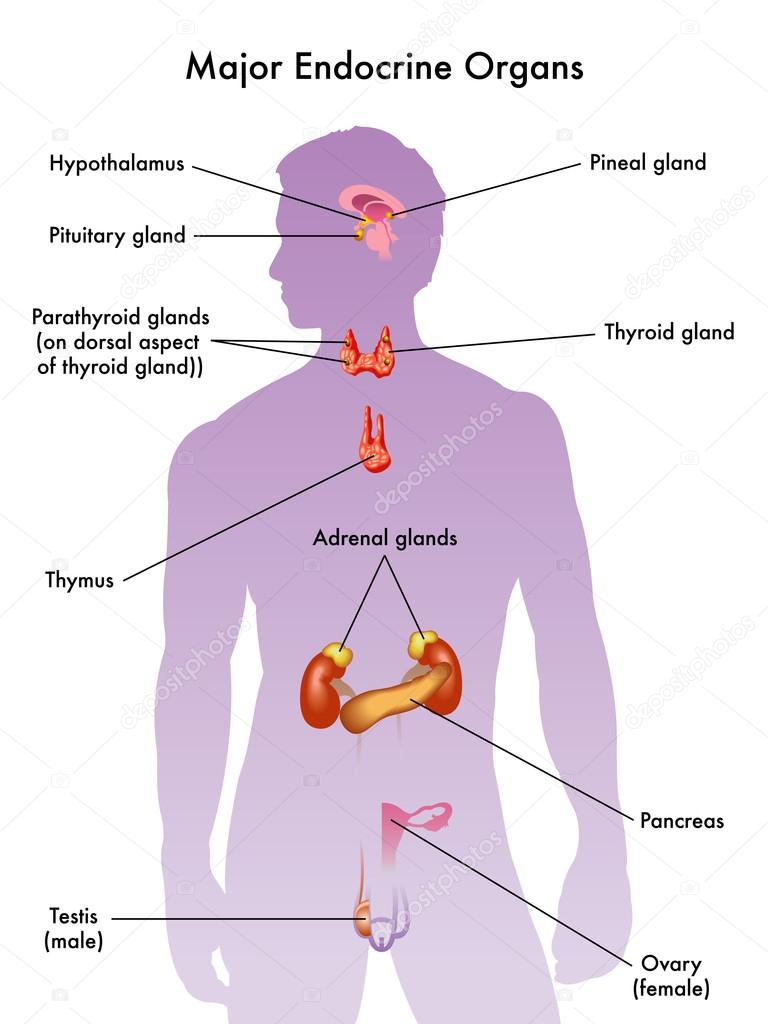 britannica.com/science/human-endocrine-system
britannica.com/science/human-endocrine-system 5. Stay in malaria-endemic countries of tropical and subtropical climate (Asia, Africa, South and Central America) for more than 3 months
5. Stay in malaria-endemic countries of tropical and subtropical climate (Asia, Africa, South and Central America) for more than 3 months 3. Tooth extraction
3. Tooth extraction